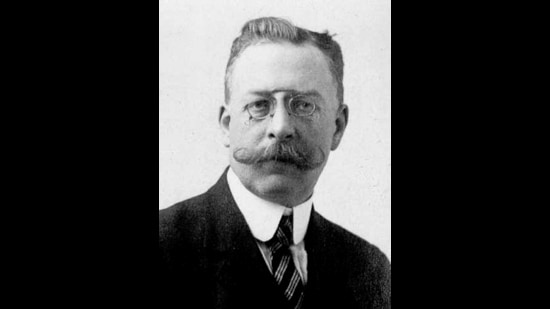We don’t give ourselves enough credit for the magic we work when we cook. Think of a simple lunch of dal, rice and sabzi. At the molecular level, starches are being gelatinised, proteins denatured, the cellulose in vegetables torn down, all to make the food look and taste better.
One such reaction looms over the rest when it comes to taking something simple and making it smell and taste better: the Maillard reaction. This is the term for the set of chemical processes that results in the browning of foods.
There’s a reason our most cherished snacks — roast potato, chips and samosas, breads and pastries — are brown, and a reason the aroma of dough frying, bread baking or coffee beans roasting draws one in. It all simmers down to this reaction, named for the French chemist Louis Camille Maillard, who first defined it in 1912. (Incidentally, it’s pronounced my-Yar).
A food must have two components — sugars and proteins — in order for the Maillard reaction to occur. The proportions in which they are present don’t matter; even a high-protein steak with traces of natural sugar will brown. So will a heavily refined flour with trace elements of protein.
The other thing one needs is heat. At high heat, say temperatures of 140 to 170 degrees Celsius, you can watch the reaction occur, as pieces of potato, dosas, kebabs crisp up and change colour.

While Maillard defined the reaction, the best explanation for it came in 1953, via the American chemist John E Hodge. He described in intricate detail the seven steps, involving various interactions, that occur at the molecular level.
Essentially, the heat first breaks down the sugars and proteins into simpler elements. These interact with each other in a cascade of intermediate reactions, creating multiple desirable taste compounds such as acetol, diacetyl, reductones and aldols, and multiple desirable aroma compounds such as pyrazines and aldehydes.
The cascade of reactions ends with the formation of a whole new class of brown molecules called melanoidins, a term that has the same root word as melanin and comes from the Proto-Indo-European or PIE root word “melano”, meaning “of darkish colour”.
For thousands of years, humans have used the Maillard reaction without knowing what it was. It is, for instance, the reason onions are sautéed first, by themselves, and other ingredients such as tomato added later. They brown better without the acidity of the tomatoes, and that supercharged browned-onion flavour suffuses any dish the onion is used in.
Which brings us to the two things to remember when trying to capitalise on the Maillard reaction: avoid water and minimise acidity.
Since the reaction occurs best in the temperature range of 140 to 170 degrees Celsius, and water cannot heat to more than 100 degrees, any recipe that contains water will not heat up enough for browning to occur. Even in a pressure cooker, the temperature of water doesn’t exceed 121 degrees Celsius, and that’s not enough to kickstart the cascade of reactions.
So if you want crispy, brown foods, keep the ingredients dry. Pat down the potatoes, drizzle oil to convey the heat as it rises in the pan. Once the water content of the potato has been drawn out too, the temperature will shoot up (most cooking oils fry at about 170 degrees Celsius) and the beautiful browning and formation of crusts can occur.
Maillard reactions can continue at temperatures higher than 170, but as one nears 200 degrees Celsius, foods begin to get charred and burnt as part of a reaction called pyrolysis. A little bit of charring can enhance overall flavour, but too much yields bitterness, so be careful to keep within the right range.
Now, to infuse the flavours of the Maillard reaction into a water-heavy dish such as a sambar, dal, soup or stew, roast the vegetables in oil before adding them to the pot; they’ll brown and carry those complex flavors into the dish with them.
Acidity is best avoided during the Maillard reaction because it slows down the process considerably. Add the tomatoes to the onions too early and you can never get the latter to brown as well. This is also why baking soda or baking powder are added to doughs; not just as rising agents but also to raise the pH. A higher pH indicates reduced acidity levels, speeds up the Maillard reaction and helps the loaf acquire a delicious crust.
So there you have it, the spell for some delicious stove-top magic: sugar, protein, heat.
Enjoy unlimited digital access with HT Premium
Subscribe Now to continue reading

Stay connected with us on social media platform for instant update click here to join our Twitter, & Facebook
We are now on Telegram. Click here to join our channel (@TechiUpdate) and stay updated with the latest Technology headlines.
For all the latest Art-Culture News Click Here
